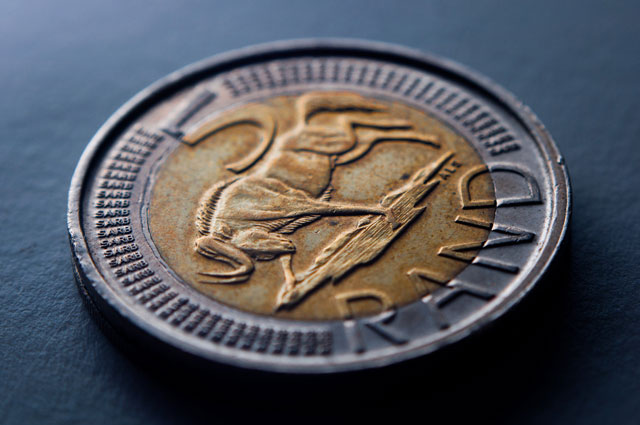
Standard Bank Research said the “rand sacrificed most of the gains it had made since the end of January”, which analysts on Monday said was due to a boiling point in politics involving President Jacob Zuma and finance minister Pravin Gordhan.
Zuma said on Friday that he will not interfere with a South African Revenue Service (Sars)-commissioned investigation by the Hawks into a “rogue unit” that allegedly operated while Gordhan was commissioner at Sars.
The current Sars commissioner, Tom Moyane, is at loggerheads with Gordhan over restructuring plans that will undo the well-oiled Sars machine that Gordhan spent years building.
Gordhan on Friday said there is a group of people who are not interested in the economic stability of the country and the welfare of its people. “It seems they are interested in disrupting institutions and destroying reputations.”
Moyane reports directly to Gordhan, but is a close ally and friend of Zuma.
The rand weakened on Friday, closing at R16,16/US$, compared to Thursday’s close of R15,60/$. It had improved somewhat by Monday at 10am, trading at R16,12/$.
The infighting between the ANC and Sars as Gordhan squares off with Moyane “threatens to hand us a downgrading quicker then we think”, according to Umkhulu Consulting’s Adam Phillips on Monday.
The Democratic Alliance called for a judicial inquiry into the long-running saga.
“A third strike could spell disaster for us all,” Phillips said. “It might be that we see some nervous end of month selling, but for proper selling we would need some direction from our leader, not just certain members of the ANC executive.”
Rand Merchant Bank economist John Cairns said Friday’s rand losses can mostly be explained by Gordhan’s rift with Moyane.
“Talk is that one of the parties will have to go,” he said on Monday. “The market fears it will be Gordhan.
The ease with which the rand moves weaker does not bode well for the currency
“Expect further large swings in the rand,” he said. “With confidence so low it will not take much to trigger a further run.”
Rand Merchant Bank economist Deon Kohlmeyer said the local bond market followed suit on Friday, with the close on the R186 at 9,44% after opening the day at 9,22%.
“Over the weekend, USD/ZAR touched a high of around 16,30 but has since retraced to near the 16 level by this morning,” he said.
“This week, the rand will again be the driving force behind bond yields, with some local data to add some fundamental flavour to proceedings,” he said. “Friday’s moves may have been exacerbated by thin liquidity, but the ease with which the rand moves weaker does not bode well for the currency going forward.”
NKC Resarch said on Monday that following the political fracas on Friday, the “rand fell beyond R16/$ to its weakest level in three weeks and hopes of correction to below R15/$ have been wiped off the table”.
“While we continue to gauge the rand as being undervalued, we will need to see a string of data improvements in coming quarters for there to be a chance of sentiment reversal anytime soon,” it said. “Expect the range on the South African currency this week to be between R15,85/$ and R16,45/$.”
Thin liquidity
NKC said the rand has rebounded since hitting all-time lows in thin liquidity during mid-January, “aided by hawkish action from the Reserve Bank and generally calmer emerging markets”.
“However, some gains have been surrendered in the wake of an underwhelming fiscal budget speech and risks remain stacked to the downside.”
Standard Bank Research said US data didn’t help the rand’s losses either. However, it said: “Although we would not be surprised to see the rand regain some of its losses from Friday, the market is now likely to be much more nervous about sudden rand reversals.”
Affecting the rand this week could be the reaction after Statistics South Africa announces its latest GDP figures on Tuesday.
Bloomberg consensus expectations are for the economic growth to have increased by 0,8% quarter on quarter, from 0,7% in the third quarter of 2015, Standard Bank said. GDP growth is expected to have slipped to 0,5% in in the fourth quarter, from 1% in the third quarter, in annualised growth.




